 A Food Groupie is a healthy, balanced, energetic, happy, feel good person. What does it take? Curiosity, instinct, exploration, adventure? No – simply a bit of imagination, and willingness to try a few new things! You need to know your Food Groups, and also see what fits your cultural background. Not everyone’s is made the same, but we can find common threads that fit us all. Do you want to scale down the weight, feel energetic, and make a real shift towards a healthier life? Check out the food groups, the calorie facts and how you too can find your way to tasty, good food without actually dieting.
A Food Groupie is a healthy, balanced, energetic, happy, feel good person. What does it take? Curiosity, instinct, exploration, adventure? No – simply a bit of imagination, and willingness to try a few new things! You need to know your Food Groups, and also see what fits your cultural background. Not everyone’s is made the same, but we can find common threads that fit us all. Do you want to scale down the weight, feel energetic, and make a real shift towards a healthier life? Check out the food groups, the calorie facts and how you too can find your way to tasty, good food without actually dieting.
“It is health that is real wealth and not pieces of gold and silver.” Mahatma Gandhi
Food Groupie: How to find your way
In terms of Food – glorious food – the question is obvious: What should you eat? The mystery to unfold is that all proteins, carbohydrates and fats are not made equal. We have  become used to a society in which processed foods, or junk, is everywhere. Even when we think we are making healthier choices, the quality of the foods may not be that good for us. You need to crawl through a junk food jungle and deploy some clever tactics to understand. You may have missed these posts on The GOODista which helps you with the junk food and healthy weight facts:
become used to a society in which processed foods, or junk, is everywhere. Even when we think we are making healthier choices, the quality of the foods may not be that good for us. You need to crawl through a junk food jungle and deploy some clever tactics to understand. You may have missed these posts on The GOODista which helps you with the junk food and healthy weight facts:
Every day you need to eat protein, carbohydrates, fat, vitamins and minerals – the 5 Food Groups – and that is as simple as that. A balance of fresh, real food brings health through nutrients and energy. 
Food Groupie: The Food Groups
All fats, carbohydrates and proteins are not made equal, and over or under eating is not that great for you. The principal is to get nutrient dense foods and energy to maximise effective metabolic burn. Calories represent the energy each food and drink processes. We will cover calories and healthy weight loss / gain below and give you great tools and trackers — check it out!
Fats
 Some foods, including most fruits and vegetables, have almost no fat. Other foods have plenty of fat. They include nuts, oils, butter, and meats like beef. The name — fat — may make it sound as if you should not eat it. But fat is an important part of a healthy diet. Fats act as messengers, helping proteins do their jobs. They also start chemical reactions that help control growth, immune function, reproduction and other aspects of basic metabolism. Fat also stores energy, insulates us, protect our vital organs and is essential for the brain and nervous system.
Some foods, including most fruits and vegetables, have almost no fat. Other foods have plenty of fat. They include nuts, oils, butter, and meats like beef. The name — fat — may make it sound as if you should not eat it. But fat is an important part of a healthy diet. Fats act as messengers, helping proteins do their jobs. They also start chemical reactions that help control growth, immune function, reproduction and other aspects of basic metabolism. Fat also stores energy, insulates us, protect our vital organs and is essential for the brain and nervous system.
- Good Fats are also called unsaturated fats, which can be found in Olive oil, Avocado, Peanut butter, flax seeds (see the related and recommended links for more).
- Bad Fats are trans fats which are manmade hydrogenated oils. Trans fats are in fried, processed or junk food (chips, margarine shortening and candy bars for ex) Trans fats are directly linked to disease, cholesterol and heart health. Less ‘Bad’ fats are so-called saturated fats, as they play havoc with cholesterol levels. Butter, Cream, Chicken with skin are examples of saturated fats. You do need good fats every day, and should try to avoid the ‘less bad fats’, and totally cut out trans fats from a healthy diet.
Carbohydrates
 Many misunderstand the role of carbs. Carbohydrates are an important part of a healthy diet and provide the body with glucose, which is converted to energy used to support bodily functions and physical activity. Some carbohydrates are better than others.
Many misunderstand the role of carbs. Carbohydrates are an important part of a healthy diet and provide the body with glucose, which is converted to energy used to support bodily functions and physical activity. Some carbohydrates are better than others.
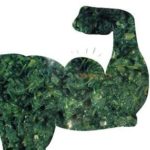 Good Carbs are the complex carbohydrates that promote good health by delivering vitamins, minerals, fibre, and a host of important phytonutrients.You find these in unprocessed or minimally processed whole grains, vegetables, fruits and beans.
Good Carbs are the complex carbohydrates that promote good health by delivering vitamins, minerals, fibre, and a host of important phytonutrients.You find these in unprocessed or minimally processed whole grains, vegetables, fruits and beans.- Bad Carbs are the simple carbohydrates or empty carbs such as white bread, pastries, sodas, and other highly processed or refined foods. These items contain carbohydrates that may contribute to weight gain, interfere with weight loss, and promote diabetes and heart disease. When thinking of choosing
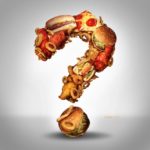 vegetables for your meal, think in colour – white is often starchier, heavier and less fibrous, whereas the stronger the colour the better they are for you. I will be writing about ‘rainbow’ food in a coming post.
vegetables for your meal, think in colour – white is often starchier, heavier and less fibrous, whereas the stronger the colour the better they are for you. I will be writing about ‘rainbow’ food in a coming post.
Protein
 Proteins are large organic compounds essential to life, made up of amino acids and are part of everything that happens within cells. Proteins are essential in a diet, as they provide energy and help the body grow, development, and repair cells ( for ex. heal wounds, fight infection and build muscle). Proteins can be found in meat, fish, chicken, eggs, beans / legumes, soy, nut butters, wheat germ and dairy products. Too much protein from meat in particular is not great for cholesterol, or gout, and can strain on your kidneys.
Proteins are large organic compounds essential to life, made up of amino acids and are part of everything that happens within cells. Proteins are essential in a diet, as they provide energy and help the body grow, development, and repair cells ( for ex. heal wounds, fight infection and build muscle). Proteins can be found in meat, fish, chicken, eggs, beans / legumes, soy, nut butters, wheat germ and dairy products. Too much protein from meat in particular is not great for cholesterol, or gout, and can strain on your kidneys.
Vitamins and Minerals
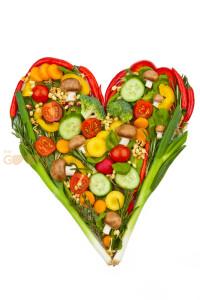 Vitamins and minerals are widely available from the natural foods we eat. Micronutrients are another name for vitamins and minerals (macronutrients are protein, carbs and fats). As your body cannot make most micronutrients, you must get them from food (or in some cases supplements).
Vitamins and minerals are widely available from the natural foods we eat. Micronutrients are another name for vitamins and minerals (macronutrients are protein, carbs and fats). As your body cannot make most micronutrients, you must get them from food (or in some cases supplements).
Vitamins are needed for a variety of biologic processes, among them growth, digestion, mental alertness and resistance to infection. They also enable your body to use carbohydrates, fats and proteins, and they act as catalysts — initiating or speeding up chemical reactions. Though vitamins are involved in converting food into energy, they supply no calories. Vitamins can be either water-soluble or fat-soluble.
Minerals are the main components in your teeth and bones, and they serve as building blocks for other cells and enzymes. Minerals also help regulate the balance of fluids in your body and control the movement of nerve impulses. Some minerals also help deliver oxygen to cells and help carry away carbon dioxide. Minerals have two categories: Major and Trace minerals. Check out the link below for a list of important vitamins and minerals.
Food Groupie: How to come to grips with Calories
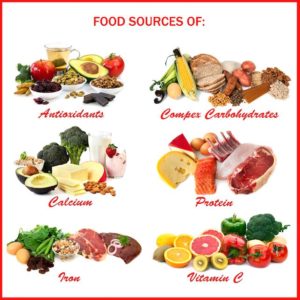 The human body needs calories (energy) to survive. Without energy our cells would die, our hearts and lungs would stop, and we would cease to be. This energy comes from food and drink. Our bodies “burn” the calories through metabolic processes. The number of calories in food is a measure of how much potential energy that food possesses. A gram of carbohydrates has 4 calories, a gram of protein has 4 calories and a gram of fat has 9 calories.
The human body needs calories (energy) to survive. Without energy our cells would die, our hearts and lungs would stop, and we would cease to be. This energy comes from food and drink. Our bodies “burn” the calories through metabolic processes. The number of calories in food is a measure of how much potential energy that food possesses. A gram of carbohydrates has 4 calories, a gram of protein has 4 calories and a gram of fat has 9 calories.
If our calorie consumption is too low or too high, we will eventually experience health complications. Not everybody requires the same number of calories each day. Our ideal calorific consumption depends on several factors, including our overall general health, physical activity demands, sex, weight, height, and shape. Check out the trackers, tools and apps below from Amazon – they help healthy weight loss / gain!
Food Groupie: Calories and Burn – the right way
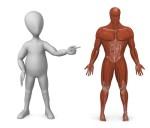 To be healthy you should ideally eat just the number of calories your body needs each day, every day. To lose weight your calorie intake will need to be less than your total daily calories burned. Remember that calories are needed for the basic functions of our body too – BMR tells you how much your body burns at rest before you even get our of bed.
To be healthy you should ideally eat just the number of calories your body needs each day, every day. To lose weight your calorie intake will need to be less than your total daily calories burned. Remember that calories are needed for the basic functions of our body too – BMR tells you how much your body burns at rest before you even get our of bed.
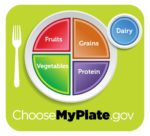 Health authorities around the world don’t agree on how many calories their citizens should ideally consume. The US government says is should be 2,700 calories per day for men and 2,200 calories for women, while the UK says it should be 2,500 and 2,000 respectively. The FAO (Food and Agriculture Organization) of the United Nations says the average adult should consume no less than 1,800 calories per day.
Health authorities around the world don’t agree on how many calories their citizens should ideally consume. The US government says is should be 2,700 calories per day for men and 2,200 calories for women, while the UK says it should be 2,500 and 2,000 respectively. The FAO (Food and Agriculture Organization) of the United Nations says the average adult should consume no less than 1,800 calories per day.
Healthy Weight and Diets
For healthy weight loss you need to go slow and use responsible tools that help you calculate what is a healthy range and rate to achieve this loss. Restricting too much can be harmful to your health.
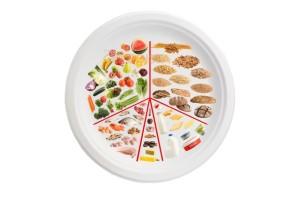 All this is of course not always easy. By striving to keep your food groups balanced, and practising some of the advice that portion plates and serving size gives – you can keep track that you are on a happy healthy way forward.
All this is of course not always easy. By striving to keep your food groups balanced, and practising some of the advice that portion plates and serving size gives – you can keep track that you are on a happy healthy way forward.
Diets that cut out food groups tend to concentrate on calorie counting alone – and not necessarily bring in the fact that there are foods that are high in calorie but essential because of their nutritional value. Or – foods that are very low in calorie, that have been altered to become highly processed and as such not at all good for you. To avoid the really ugly foods, you need to look out for what is called empty calories. You get these mainly from solid fats (for ex. beef fat, shortening and butter) and added sugars (sweeteners added to foods and beverages during food processing).
Food Groupie: Eat Well, and Enjoy!
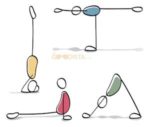 The goal is to reach a weight loss so that your body has time to adjust and combine it with exercise, like walking, strength training, yoga or Pilates. A healthy lifestyle change with plenty of healthy balanced food, and exercise will get you there. There is so much inspiration you can get from around the world – and by simply staying true to what Mother Nature has in abundance you win health, and lose those extra kilo. Eating fresh real food from all the food groups is what does it.
The goal is to reach a weight loss so that your body has time to adjust and combine it with exercise, like walking, strength training, yoga or Pilates. A healthy lifestyle change with plenty of healthy balanced food, and exercise will get you there. There is so much inspiration you can get from around the world – and by simply staying true to what Mother Nature has in abundance you win health, and lose those extra kilo. Eating fresh real food from all the food groups is what does it.
I know! Over the last 2,5 years I have lost 50 kilo, and am keeping it off by continuing to eat healthy, exercise and practice what I preach 🙂 One easy way to keep on going is talking to friends that live around the world. You get so inspired by different cultures, traditions and habits – and of course food is one big part! Check out my next post on 4 Diets from around the world – so inspirational!
 Follow The GOODista for more tips, and lifestyle changes you CAN do every day and working (far) away. An email address is all you need to give us to become a Goodista 🙂
Follow The GOODista for more tips, and lifestyle changes you CAN do every day and working (far) away. An email address is all you need to give us to become a Goodista 🙂
Recommended and Related:
- What is Cholesterol? – Kidshealth.org
- Good and Bad Fats – Helpline.org
- What do Fats do in the body? -LiveScience.com
- Carbohydrates – Human Sciences
- Vitamins and Minerals – UK National Health Services
- List of Vitamins and Minerals – BUPA UK
- Tools and Tracker with great information of healthy foods – Choose My Plate
- Healthy Diet and Lifestyle, Food Groups, Nutrition Before and During Pregnancy, Child Nutrition, Physical Activity – krilloil.com
- The Food and Nutrition Information Center – USDA
- Nutritional Values For Common Foods And Products – nutritionvalue.org
- 30 Foods That Will Make Your Life Super Healthy – be healthy today




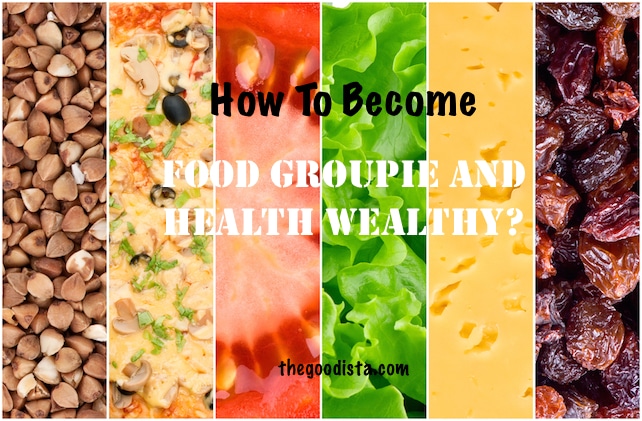

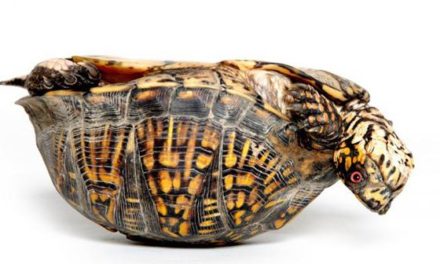






Hello, I think your website might be having browser compatibility issues.
When I look at your website in Ie, it looks fine but when opening in Internet Explorer,
it has some overlapping. I just wanted to give
you a quick heads up! Other then that, fantastic blog!
Thanks Gabriel, Really appreciate your comment, and will certainly look into the overlapping issue. Please feel free to come back and read, comment and share – the more the merrier, right:)
This is very fascinating, You’re an overly skilled blogger.
I’ve joined your feed and sit up for searching for extra of
your fantastic post. Additionally, I have shared your website in my
social networks
Thanks Bridget, for your comment and so glad you like the post about Food Groups. Perhaps you would also like this one: Why Size Matters. If you want to follow The GOODista you can also subscribe. You are welcome back any time, and please continue commenting – it makes the site better:) Cheers, The Goodista
Greetings! Very helpful advice in this particular post!
It is the little changes which will make the most
significant changes. Thanks a lot for sharing!
Indeed Robyn, small steps and small changes lead to a big difference – sometimes life altering… Feel free to come back to The GOODista anytime, and subscribe if you wish to have updates directly in your in-box. Cheers!
Appreciating the time and energy you put into your blog
and detailed information you provide. It’s awesome to come across
a blog every once in a while that isn’t the same old rehashed information. Fantastic
read! I’ve bookmarked your site and I’m adding your RSS feeds to my Google account.
Thanks for nice feedback, and welcome back to The GOODista anytime 🙂 You can also subscribe and get updates and special offers directly in your in-box. Cheers!
Way cool! Some very valid points! I appreciate you writing this article
and the rest of the website is also very good.
Thanks Shawn for nice comments – and I look forward to seeing your site when it is ready. Welcome back to The GOODista anytime 🙂
Thanks on your marvelous posting! I certainly enjoyed reading it,
you are a great author.I will remember to bookmark your blog and will eventually come back later on. I want to encourage that you continue your great work, have a nice day!
Thanks for your encouraging comment, and hope to have you back as a reader of The GOODista 🙂
Way cool! Some extremely valid points! I appreciate
you penning this article and the rest of the website is really good.
Thank you for presenting all those facts to us in such an “easy-to-digestable” way!